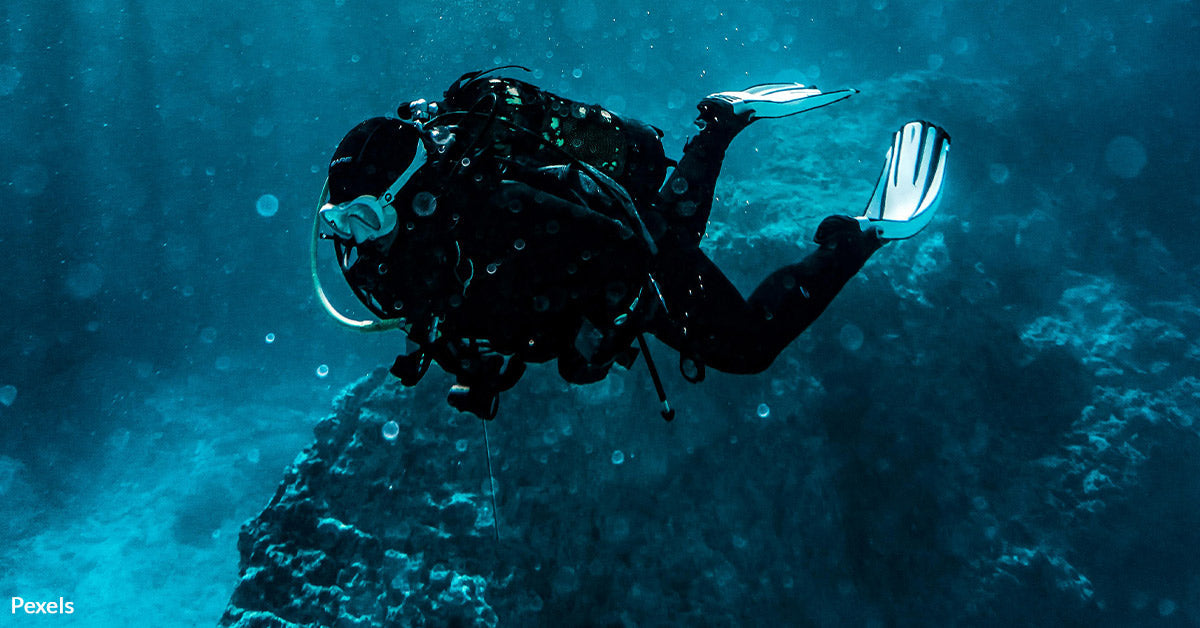Prehistoric Shark Fossil Emerges in Desert Wasteland and Sparks Global Awe
Experts in Peru have unveiled the nearly complete fossil of an ancient shark with formidable jaws and large teeth. This creature once swam the southern Pacific Ocean and preyed on small fish.
Scientists estimate the shark’s age at nine million years. It has been classified it as Cosmopolitodus hastalis, an extinct relative of today’s great white shark.
The fossil lay buried in the Pisco Basin, a desert that covers parts of southern Peru and was a sea millions of years ago.
Researchers found the remains about 235 kilometers south of Lima. They revealed the fossil to the public in several glass cases. One container holds a massive jaw, and others contain vertebrae and teeth. Paleontologists also discovered sardine remnants in the shark’s stomach.

Photo: Pexels
The species lived roughly nine million years ago in the southern Pacific.
Glimpse of a Powerful Predator
The newly presented specimen measures about seven meters in length, with teeth that reach 8.9 centimeters. A desert now blankets the area that was once an ocean habitat, Forbes reports.
Scientists rarely find such complete shark fossils. Shark skeletons are primarily cartilage and degrade easily, Reuters reports. The quality of this fossil’s preservation suggests unique conditions in Peru’s desert landscape.
The desert region where the fossil was discovered experiences high temperatures and sparse rainfall. This dryness aids in fossil preservation. Layers of sediment once covered the carcass, which protected fragile cartilaginous remains.
Researchers have praised the discovery as a rare window into an ancient environment. This shark species likely helped regulate prey populations. It also navigated waters rich in other marine animals, Interesting Engineering reports.

Photo: Pexels
Near-complete remains are rarely found because sharks have cartilaginous skeletons.
Food Choices in a Primeval Sea
Scientists found numerous sardine bones in the shark’s stomach. Sardines thrived in these waters nine million years ago. Paleontologist Mario Urbina, who participated in the fossil’s presentation, notes that anchovies did not exist during that era. Sardines served as a vital food source instead, Jerusalem Post reports. These details confirm that marine predators hunted smaller fish in schools and contributed to a balanced ecosystem.
Experts also recognize that this ancestor of the great white shark had fewer serrations on its teeth than its modern counterpart. These tooth structures helped it clamp down on slippery prey. Researchers discovered small nicks on the fossil’s tooth surfaces, which suggest contact with bony or scaly fish. The presence of sardine bones inside the fossil indicates a sudden end for both predator and prey.

Photo: Pexels
Shifting tectonic plates transformed the shark’s sea into a desert.
Desert Origins for Undersea Giants
The Pisco Basin is a premier site for paleontological discoveries, Techno-Science reports. Arid conditions shield fragile bones from water damage and erosion. Many deserts on Earth were marine environments in past epochs. Tectonic shifts over millions of years elevated former seafloors to dry land. Scientists often refer to such sites as “fossil treasure troves.”
César Augusto Chacaltana, an engineer with the Peruvian Geological and Mining Institute, credits the basin’s rapid sedimentation for the fossil’s exquisite state, Reuters reports. Deposits of silt built up around the shark’s remains and shielded them from currents or scavengers.
Scientific Significance and Future Prospects
This fossil supports the hypothesis that ancestors of modern great whites spanned continents. Scientists have found C. hastalis remnants in various regions. Each new specimen reveals traits that may have evolved over time. Experts remain curious about why these ancient sharks vanished. They also question whether climate shifts or competition played a role.
Researchers plan further tests on these remains. They will analyze the shark’s vertebrae and tooth enamel for clues about its life cycle and hunting patterns. Data on the shark’s environment may inform studies of modern species. Contemporary ocean predators face habitat shifts and declining fish stocks. Insights from ancient sharks could shape conservation policies.

Photo: Pexels
The remains offer a valuable snapshot of Miocene-era marine life.
Beyond One Shark
Peru’s deserts have exposed fossils of crocodiles, dolphins, and other marine creatures from 10 to 16 million years ago. These remains highlight a complex web of life in prehistoric seas. Ancient whales and massive marine reptiles have also surfaced in other deserts across the globe, Interesting Engineering reports. Paleontologists predict many more surprises from fossil-rich regions.
Each new discovery rewrites a chapter in Earth’s geological story. Ancient marine predators left behind puzzles that researchers piece together. The nine-million-year-old Cosmopolitodus hastalis fossil in Peru provides a powerful look at a shark that once dominated the Pacific waters. It also challenges perceptions about deserts. Those silent landscapes can hold the key to Earth’s distant, watery past.





























































































































































































































































































































































